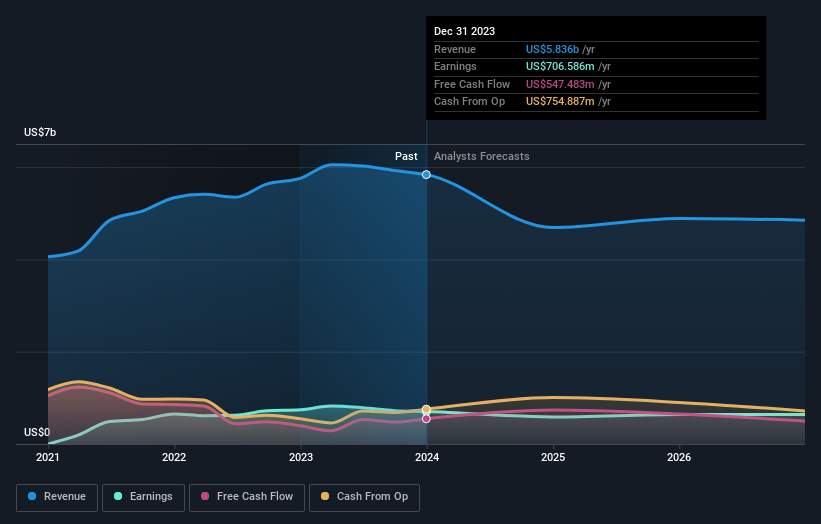Harley-Davidson, Inc. (NYSE:HOG), is not the largest company out there, but it received a lot of attention from a substantial price increase on the NYSE over the last few months. While good news for shareholders, the company has traded much higher in the past year. With many analysts covering the mid-cap stock, we may expect any price-sensitive announcements have already been factored into the stock’s share price. However, could the stock still be trading at a relatively cheap price? Today we will analyse the most recent data on Harley-Davidson’s outlook and valuation to see if the opportunity still exists.
Check out our latest analysis for Harley-Davidson
Is Harley-Davidson Still Cheap?
The stock seems fairly valued at the moment according to our valuation model. It’s trading around 12% below our intrinsic value, which means if you buy Harley-Davidson today, you’d be paying a fair price for it. And if you believe the company’s true value is $45.23, then there’s not much of an upside to gain from mispricing. So, is there another chance to buy low in the future? Given that Harley-Davidson’s share is fairly volatile (i.e. its price movements are magnified relative to the rest of the market) this could mean the price can sink lower, giving us an opportunity to buy later on. This is based on its high beta, which is a good indicator for share price volatility.
What kind of growth will Harley-Davidson generate?

Future outlook is an important aspect when you’re looking at buying a stock, especially if you are an investor looking for growth in your portfolio. Buying a great company with a robust outlook at a cheap price is always a good investment, so let’s also take a look at the company's future expectations. Though in the case of Harley-Davidson, it is expected to deliver a negative earnings growth of -9.4%, which doesn’t help build up its investment thesis. It appears that risk of future uncertainty is high, at least in the near term.
What This Means For You
Are you a shareholder? Currently, HOG appears to be trading around its fair value, but given the uncertainty from negative returns in the future, this could be the right time to reduce the risk in your portfolio. Is your current exposure to the stock optimal for your total portfolio? And is the opportunity cost of holding a negative-outlook stock too high? Before you make a decision on the stock, take a look at whether its fundamentals have changed.
Are you a potential investor? If you’ve been keeping tabs on HOG for a while, now may not be the most advantageous time to buy, given it is trading around its fair value. The stock appears to be trading at fair value, which means there’s less benefit from mispricing. In addition to this, the negative growth outlook increases the risk of holding the stock. However, there are also other important factors we haven’t considered today, which can help crystalize your views on HOG should the price fluctuate below its true value.
So while earnings quality is important, it's equally important to consider the risks facing Harley-Davidson at this point in time. For example, we've found that Harley-Davidson has 3 warning signs (2 can't be ignored!) that deserve your attention before going any further with your analysis.
If you are no longer interested in Harley-Davidson, you can use our free platform to see our list of over 50 other stocks with a high growth potential.
Valuation is complex, but we're here to simplify it.
Discover if Harley-Davidson might be undervalued or overvalued with our detailed analysis, featuring fair value estimates, potential risks, dividends, insider trades, and its financial condition.
Access Free AnalysisHave feedback on this article? Concerned about the content? Get in touch with us directly. Alternatively, email editorial-team (at) simplywallst.com.
This article by Simply Wall St is general in nature. We provide commentary based on historical data and analyst forecasts only using an unbiased methodology and our articles are not intended to be financial advice. It does not constitute a recommendation to buy or sell any stock, and does not take account of your objectives, or your financial situation. We aim to bring you long-term focused analysis driven by fundamental data. Note that our analysis may not factor in the latest price-sensitive company announcements or qualitative material. Simply Wall St has no position in any stocks mentioned.
About NYSE:HOG
Harley-Davidson
Manufactures and sells motorcycles in the United States and internationally.
Good value with adequate balance sheet.
Market Insights
Community Narratives



